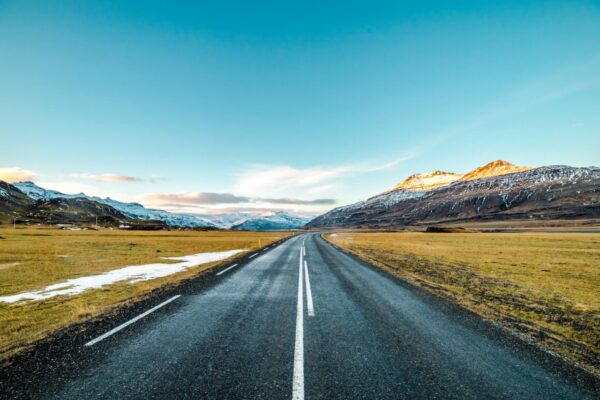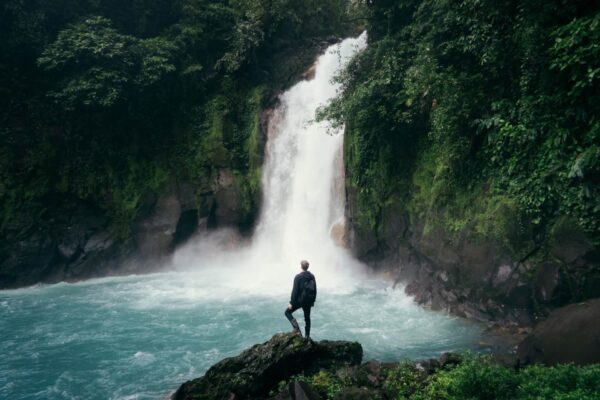Not only Mainland Scandinavia is a popular holiday destination for nature lovers, but Iceland and the Faroe Islands are also popular destinations because of their beautiful nature. Thus, travelling on the Ring Road is a dream come true for many.
What’s in favour of a round trip of Iceland?
Almost nowhere else you will find so many impressive natural spectacles on one island as in Iceland. Especially if it’s your first time in Iceland, you can get an overview of the whole country via the ring road.
Depending on how much time you have, it’s worth taking a detour to more remote parts of the country. Far off the beaten track, you will find small riding stables, natural hot springs and empty beaches.
However, as Iceland is not only becoming increasingly popular with tourists, but also has a harsh climate, there are a few things to bear in mind when planning your trip. Especially if you are travelling by car or even want to camp, you should be prepared, as the sometimes arctic nature should not be underestimated, even in summer.
How long does a round tour of Iceland by car take?
If you decide to go on a round trip by car or campervan, you are probably wondering how much time you should plan for. The answer to this depends on what time of year you are travelling.
In late spring, summer and early autumn, you can complete the Ring Road in a week. In winter, however, you should expect to make significantly slower progress. You should therefore plan at least two weeks in the winter months.
If you have less time, a holiday in Reykjavík is also worthwhile. From there, you can go on several day trips into nature. However, there is plenty to discover in the capital itself. The Blue Lagoon geothermal baths, for example. But you can expect it to be very busy here, especially in the high season. You could also take a look at the Golden Circle Route.
Which routes are particularly suitable for a round trip of Iceland?
If you are planning a trip to Iceland by car, there are two particularly recommendable routes from Reykjavík. Of course, you can plan your route more individually, but the options presented here are recommended because they have access to a particularly large number of sights.
Popular places along the ring road include the small coastal village of Vík in the south, with its beautiful old church and black beach, and Höfn in the south-east, which is surrounded by glaciers. Jökulsárlón in particular, about an hour from Höfn, is ideal for glacier tours.
If you want to watch whales and dolphins, you should head for Húsavík in the north of the island. Here you will find an impressive whale museum and somewhat less frequented geothermal springs.
The Golden Circle Route – the short version
The Golden Circle Route, which is around 300 kilometres long, is the ideal route if you want to concentrate on the region around Reykjavík or simply have a little less time. But even if this route can be travelled in about three to four hours in good weather conditions, you should allow enough time for stops.
Thingvellir National Park: a natural wonder with history
Thingvellir National Park is a stopover on the Golden Circle Route that you should definitely make time for. You can reach it by car from Reykjavík in around 45 minutes. The first popular assemblies of Icelandic settlers were held here from 900 AD. During the High Middle Ages, laws were also passed and trials were held.
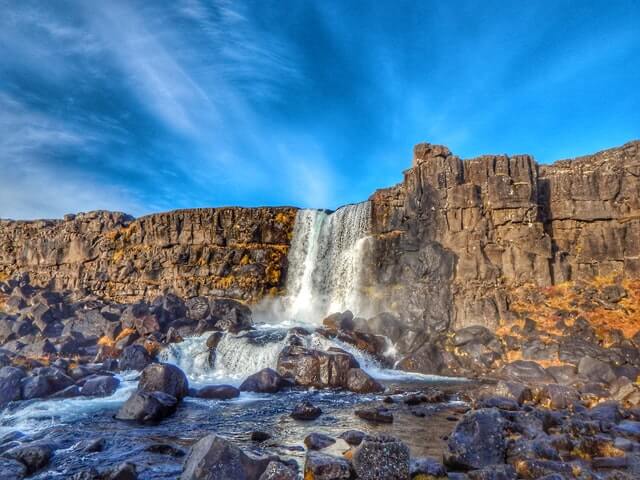
The place is of great cultural importance to Icelanders. So be particularly considerate when you visit Lake Thingvallavatn and the surrounding landscape. A visit to Thingvallakirkja, a church from the 19th century, is also worthwhile.
Haukadalur: experience volcanism
The next attraction on the Golden Circle Route is Haukadalur, a valley that clearly demonstrates Icelandic volcanism. Here you can not only visit the Strokkur geyser, for which the area is particularly famous, but also a number of hot springs.
Gullfoss: the two-tiered waterfall
A few kilometres further on, you will find Gullfoss, a particularly impressive waterfall that you should definitely visit on the Golden Circle Route. The gorge into which the glacial river Hvítá plunges over two steps here is up to 70 metres deep.
The Ring Road – the classic Iceland road trip
The Ring Road, or Hringvegur in Icelandic, is the classic road trip in Iceland. If you are there for the first time and want to get an overview of the whole country, this road is the perfect choice, as it runs for just over 1200 kilometres around the island.
From here, you can reach numerous sights, towns and villages. It is also possible to make detours to the plateaus in the east or the western fjord country. For the latter, however, you should choose an off-road vehicle and the right time to travel.
With the speed limit of 90 km/h, which applies on the ring road with a few exceptions (especially the unpaved sections in the north), you can complete the ring road in around 14 hours in good conditions.
If you want to see a few places, you should spread this out over at least a week. If you prefer relaxed travelling and don’t want to drive so much per day or are travelling in winter, you should plan a minimum of two weeks.
Iceland: are there any big cities?
Iceland is not particularly urban. The city sizes in particular differ from what you are probably used to. Reykjavík, the northernmost capital in the world, has a population of just 140,000, the same as a small city in the UK. Kópavogur takes second place with a population of around 36,000, after which the numbers decrease rapidly.
But even if Reykjavík is not as big as the European metropolises of London or Paris, for example, there is plenty to see in the cultural centre of the island. Museums, typical Icelandic specialities, the Icelandic art and music scene and even a lively nightlife can be found here.
Is it safe to travel around Iceland by car in winter?
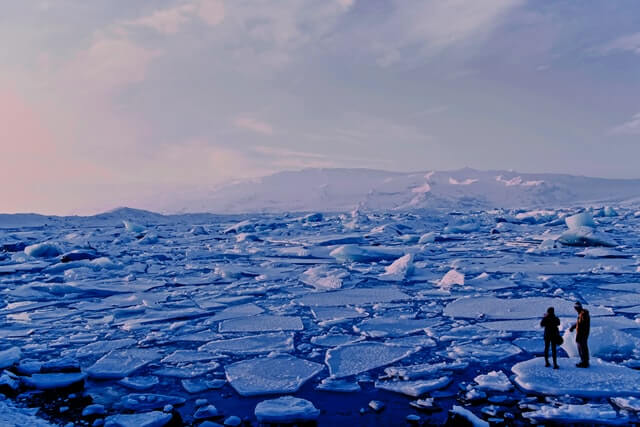
If you want to see the Northern Lights, you should opt for a tour of Iceland in winter. However, you should only do this by car if you already have driving experience on snow-covered roads.
We recommend to avoid more remote areas in winter, as it can quickly become dangerous if you are not familiar with the area and the weather in the region.
However, if you stay on the ring road, there is nothing wrong with travelling in winter if you have driving experience and the necessary equipment. Camping in winter is not advisable unless you are very experienced in camping with extreme conditions.
Stopping off at inns or day trips from your accommodation offer you a safer way to marvel at the Northern Lights.
Rental car or take your own car for a tour of Iceland?
If you want to bring your own vehicle, that’s possible. To do this, take the ferry from Hirtshals, which reaches Iceland within three days with a stopover on the Faroe Islands. However, this tends to be more expensive than the combination of flight and hire car.
But if you have the time, you should definitely think about it, as the ferry trip is definitely an experience in itself. And especially if you’re not travelling in peak season, it’s not as expensive as you might expect.
Of course, there is also the option of hiring a car. If you plan to be travelling mainly on paved roads such as the Ring Road and are not travelling in winter, you don’t need an off-road vehicle. Especially if your budget is not that big, it is very worthwhile to opt for a small or mid-range car.
Camping in Iceland
As far as accommodation is concerned, you basically have two options: Renting accommodation or camping. During the warmer months, many people choose to camp in a tent. Further, it is no problem to experience nature up close at one of the many idyllic campsites on the island.
If you are planning your holiday during the peak season, you should book in advance, especially at campsites along the ring road. In the low season and on more remote sites, it is usually not a problem to find accommodation spontaneously.
You should check whether the Icelandic Campingcard is worthwhile for you. It allows two adults and up to four children under the age of 16 to stay overnight at many campsites throughout Iceland.
Renting a holiday home in Iceland
The second option for accommodation during a tour of Iceland, is hotels, holiday flats and holiday homes. The first two options are more likely to be found in Reykjavík, while holiday homes and guest rooms can also be found in more rural areas.
The price level is, as in general, somewhat higher, but especially if you are usually travelling with a tent, it is likely that you will want a warm bed at some point. A change in the weather or a storm can also make sleeping outdoors uncomfortable. In such situations, a holiday home is a wonderful alternative option.
Travelling to Iceland
Ferry from Hirtshals to Seyðisfjörður
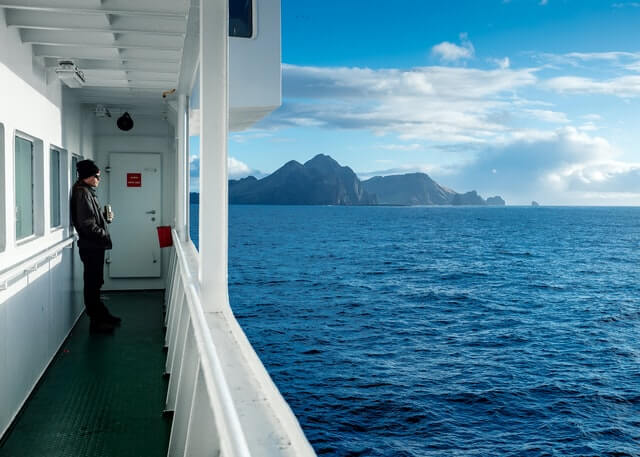
The journey by ferry takes place from Denmark’s northernmost harbour, Hirtshals, via Tórshavn, the capital of the Faroe Islands, to the Icelandic harbour of Seyðisfjörður in the east of Iceland. During the summer season, it is possible to spend three days on the Faroe Islands before continuing the journey to Iceland.
Plane to Keflavík
Most airlines fly to Reykjavík. Keflavík Airport (pronounced Keplavik) is about three quarters of an hour by car from the Icelandic capital. You will need to allow a little more time by bus.
Travelling around Iceland by car: tips at a glance
- The low season is quieter and cheaper.
- Most campsites are open from June to September.
- During the high season you should book in advance; in the low season you can usually get a pitch spontaneously.
- Check the weather and road conditions several times a day.
- Even on a camping holiday, be prepared to switch to permanent accommodation from time to time.
- Take advantage of functional clothing, as the weather changes quite quickly, and do not forget to pack anything important. You will find our Iceland packing list here.
